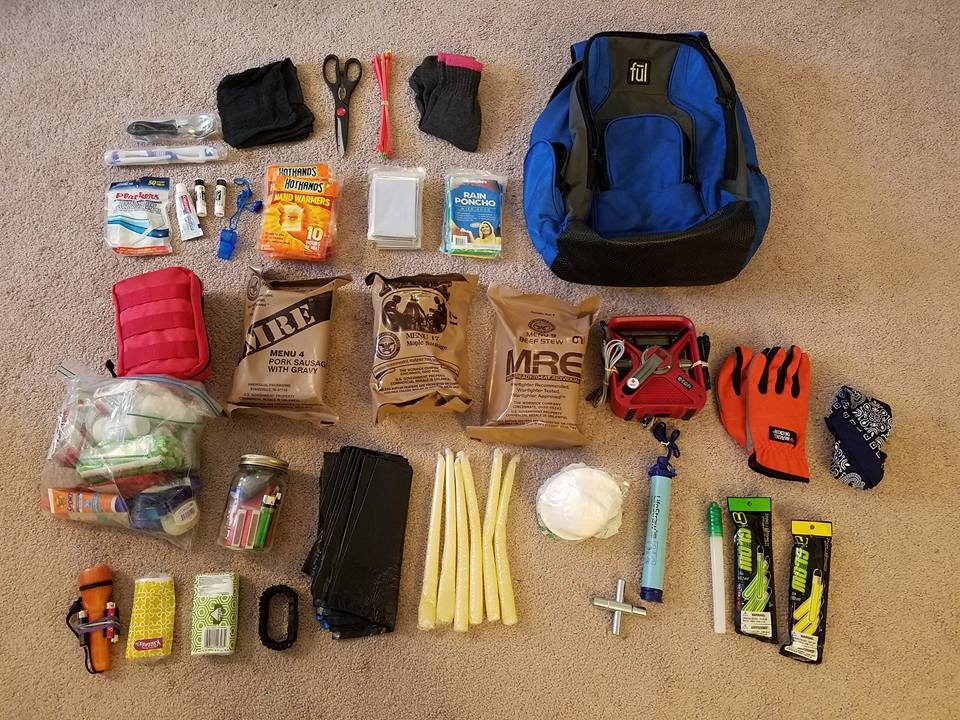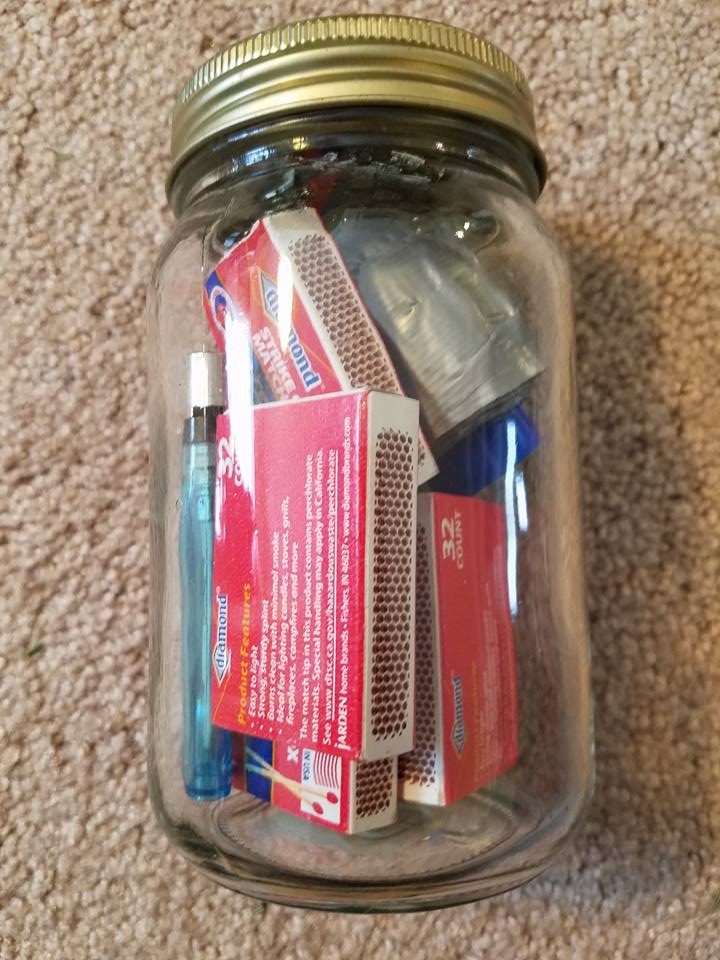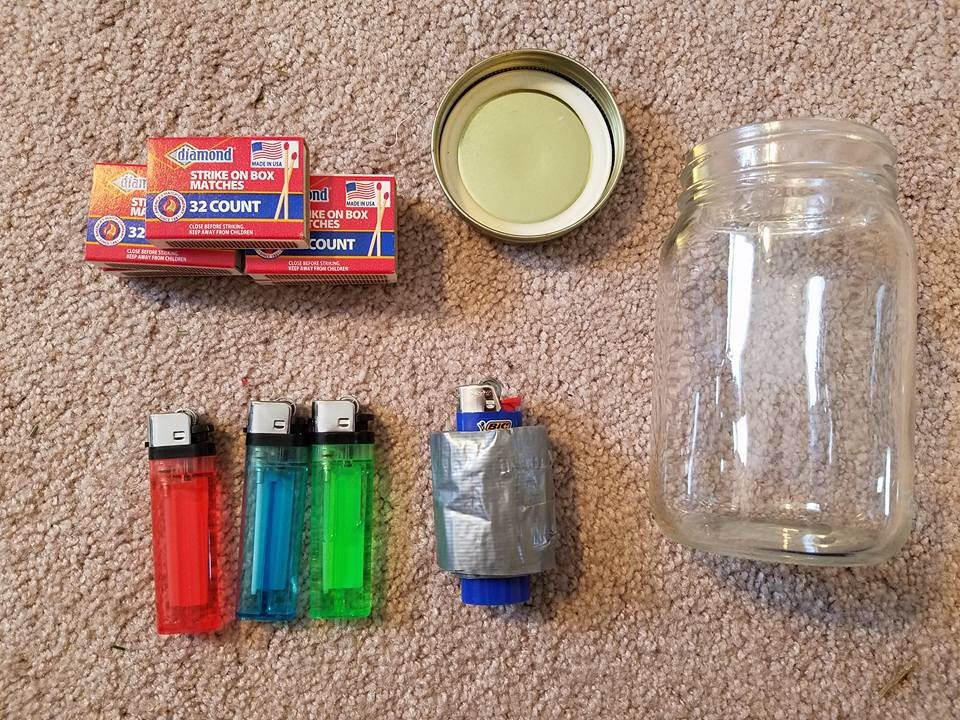The power company calls and you will have no power for 3 days. Do you have what you need to survive? The flood waters are rising and you must evacuate to a nearby school on a hill, are your supplies portable enough for you to carry? Pack a backpack with all your needs for 72 hours
This 72-hr kit is designed to have everything you need for 3 days. Some terms you may hear in the community is bug-out bag, or get-home-bag. Bug-out bags are for when you plan to abandon your dwelling, and camp out in the woods or other shelter.
This is not a bug-out bag for extended camping. A get-home-bag has limited supplies designed to get a person from the office to their home to reunite with family and re-stock.
This could be a get-home-bag but is not designed so. (I explain the main differences between options here.)
Planning your 72-kit:
Step 1: Picking a backpack
As you think about building a 72-hr pack, you will want a strong durable backpack that is comfortable to carry.
- You may be tempted to go to an army surplus store, however we don't recommend a military looking backpack. If you are traveling down a highway full of abandoned cars, it's not advisable to look like the military. You don't want others to guess what supplies you have, and military folks are known to carry gear with them. So don't look like the military.
- The trick is to blend in; be the kid with a school backpack, the business man with his gym bag or the professional woman with a cute leather bag.
Step 2: Person specific items
What items do you need, that are specific for you?
- Are there medications you need on a daily basis? Do you wear contacts or glasses? Are you prone to allergy attacks in the summer?
- Do you get sun-burnt easily? Do you get over-heated easily?
- Can your children carry their own backpack or do you have to carry their supplies as well?
- Do you have pets that will require their own kits? (Four-legged creatures are family too!)
Step 3: Managing Backpack Weight
Ideally your pack should weigh less than 20% of your body weight.
- For smaller humans, this may mean having to decided what is absolutely necessary in order to cut down on weight.
Step 4: Include the Essentials
Do you have the absolute essentials you need to survive for 3 days? Food, water, shelter, and first aid.
This example kit is designed to include:
- food
- water solutions
- first aid
- + over the counter medications
- + exposure prevention
- fire starting solutions
- hygiene supplies
- communications
- power
- defense.
Most importantly, you should know how to use items in your kit and personalize it for your needs. Below I have listed the items in my pack by category.
This backpack kit costs about $260 to assemble. But costs will vary depending on where you find your items, and what you choose to include.

Food
- 3 MREs (MREs found here)
- Chocolate or jelly beans (for morale)
- utensils
- vodka/alcohol (wounds + morale)
I stock MREs for a number of reasons. I looked into making my own, but MREs are cheap, for what you are getting. Consider on Amazon for MREs, you can buy one for about $13.
It comes in a sealed package designed to resist the elements. It contains at least 2000 calories, and it also has a multi-year expiration date.
I recommend stocking a few when you want a complete package already ruggedized for the environment.
Water Supplies
- water bottle
- silcock key
- Sawyer Filter
The approach to water has to be multidimensional. How to find water, store it, and purify it?
- Find: Finding water in an urban environment can be difficult. A silcock key is essentially a universal socket wrench for outdoor water facets. Notice on the sides of building there are outdoor water facets, if only you have this handy wrench to open them. This, of course, is (possibly) stealing water, so use in an emergency.
- Store: Store the water is a durable water bottle capable of being dropped down staircases. I have dropped my trusty Nalgene many times.
- Purify: Purify the water with a simple Sawyer filter. You could also use iodine tablets. Either solution can make any water source drinkable.
You can find these items easily on Amazon: silcock key, Nalgene bottle, Sawyer Filter.
Shelter*
- duck tape (around a lighter)
- paracord
- trash bags
- mylar blankets
- poncho
- carabiners
- hand warmers
- zip ties
- work gloves
*I do not include a tent or tarp because of weight
Many of these items work together to replace the function of the tent if needed. The poncho also can be used for shelter.
The Mylar blanket and trash bags are waterproof and large enough for a tarp. Mylar blankets are very versatile and can cover many functions. They are warm and reflective, which makes them perfect for keeping humans warm.
Mylar blankets can be duck taped together to form a makeshift tent or tarp. They can be used to signal or insulate a fire to reflect back warmth. These are the blankets you see first responders use on victims to prevent shock. They are cheap, lightweight, and easy to find.


First Aid
- antibacterial towelettes
- latex gloves
- painkiller (Tylenol or alleve)
- diphenhydramine (Benadryl)
- antacid (tums)
- hydrocortisone cream
- triple antibiotic ointment
- cough drops
- earplugs
- tweezers
- scissors
- cotton balls
- waterproof adhesive tape
- gauze rolls
- band-aids
- butterfly bandages
- ace bandage (like this ace bandage)
- hand sanitizer
- Q-tips
- petroleum jelly
- Nozema
For first aid kits, there are many pre-made kits available online. I made my kit mostly from the Dollar Store and was able to customize exactly what I wanted. However, pre-made kits have the advantage of filling in the basic without you having to think about it. They can scale to the size you need and are pretty cost effective. I recommend this small, compact first aid kit if you aren't planning to build your own. I go in-dept into first aid kits in my post on them: 3 Extra Places for a First Aid Kit.


Fire and Light
- glow sticks (LED glow sticks)
- flashlight
- extra batteries for flashlight
- candles
- matches/lighter
Communications
- phone charger
- AM/FM crank radio
- whistle
- notebook + pen/pencil
I have a small flash light I carry with me. This light comes in handy in dark cars, and even darker parking lots. It is pretty small but is quite bright. It has a high beam, low beam, and flashing beam settings. I like the different settings, but you can't turn it off quickly, as you have to cycle through all the settings. I still find it a great deal, and the clip is very strong.
The mason jar of fire is pretty handy. The jar keeps it all contained and dry. If a lighter were to break the jar would contain the lighter fluid. The jar could be used for many purposes, holding candles upright, storing more water, keeping this waterproof, etc.
Hygiene
- bar soap
- Kleenex
- Floss
- baby shampoo
- hand lotion
- sunscreen
- bug spray
- toothpaste
- toothbrushes
- tampons
- menstrual cup (I highly recommend the Diva cup)
- condoms
- wash cloths
- chap stick
- socks
- contact solution/case
Other
Sourcing Items for you 72-hr Bag
Many of the smaller items I found at the dollar store or target, some special items I ordered off amazon. Thrift stores can be a good place for backpacks and smaller bags to group the first aid kit or hygiene items. When your hands are muddy or bloody, you don't want to have to fish through a million loose items to find the wet wipes!
Have you ever thought about putting together a 72-hr kit? What items might I have forgotten to add? Thanks for stopping by!
Looking for more?






